What sizes are Labradors?
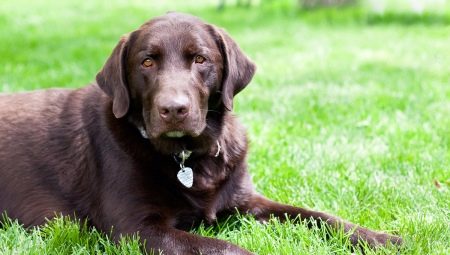
Distinctive characteristics of the Labrador breed make its representatives demanded and desirable pets of a person. Thanks to their friendliness, cheerfulness and strength, the animals are suitable for a variety of work activities, and are suitable for different owners, including children, whom the dogs love, and quickly become attached to them.


Puppy sizes
The Labrador possesses excellent working qualities, ease of movement, impeccable, harmonious body type, besides, the dog is well trained, therefore the breed is considered universal.
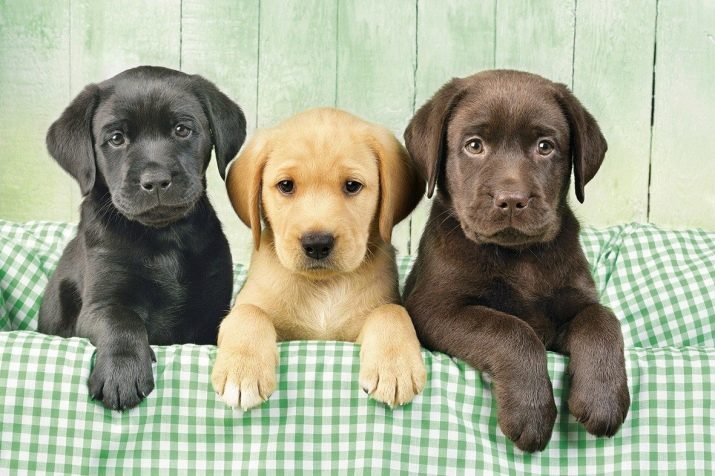
There are official standard parameters developed for puppies of these animals by RKF experts.necessary in order to monitor their development and growth.
The table below is approximate, but you should still adhere to the indicated values established for small Labradors from 30 days to 10 months:
Age, months | Puppy weight, kg | Height at the withers, cm | Head circumference, cm | Chest girth, cm | Muzzle length, cm | Face girth, cm | Pastern size, cm |
1 | 3,5-3,8 | up to 23.5 | no more than 28 | 37–38 | about 4 | 17 | 9 |
2 | 7–8 | 30–32 | 29–32 | 45–56 | 4,5-5 | up to 22 | 10–11 |
3 | 12–14 | 39–42 | 34–36 | 51–56 | about 7 | 23–24 | 11–12 |
4 | 17–19 | 44–46 | 39 | 60–65 | 7–8 | 24–26 | 11,5–12 |
5 | 21–22 | 48–51 | about 42 | 66–68 | 7,5–8,5 | 25–27 | 11,5–12,5 |
6 | 24–26 | 50–55 | 42–43 | 67–70 | 8–9 | 27–28 | up to 12.5 |
7 | 26–28 | 52–56 | 43–44 | 70–74 | 8–9 | 28–29 | 12–13 |
8 | 28–30 | 54–57 | up to 46 | 70–76 | 8–9 | 28–30 | up to 13 |
9 | 29–32 | 54–58 | 46–48 | 70–77 | up to 9.5 | 28–31 | up to 13 |
10 | 30–36 | 54–58 | 46–55 | 70–84 | no more than 10 | 28–32 | 11,5–14 |
In the future, the animal is considered an adult, however, some pets continue to grow up to a year, and males are much larger and heavier than bitches.
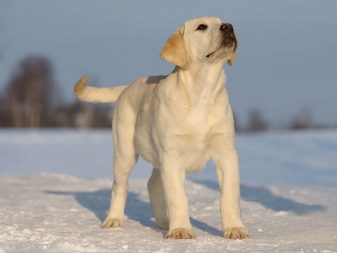

Any deviations from the norm lead to the disqualification of the pet, therefore, when choosing a puppy, you need to take into account many such nuances. However, in reality, of course, there are differences in the parameters of each small pet, due to individuality due to heredity.
It is advisable to take measurements periodically by months, with the help of a specialist or on your own, so as not to miss important points of the growing up of the dog and the changes associated with it.
Requirements for the exterior of adult animals
Looking at an adult animal of the Labrador breed gives the impression of a strong and at the same time compact animal with a large head, powerful chest and wide, strong limbs.

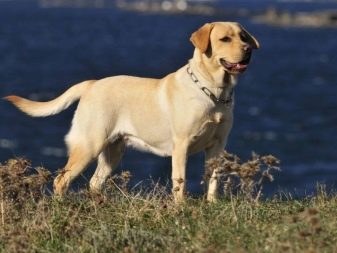
Breed standards are:
- flat back with a wide loin, deep chest;
- a thick tail of moderate length, gradually tapering to the tip;
- straight forelimbs with a long oblique shoulder;
- hind hocks located low, well muscled and well developed;
- a large, wide skull with a powerful blunt muzzle, strong jaws and erect teeth;
- ears - drooping, but not heavy, located at the back and close to the head;
- powerful, strong neck;
- paws are rounded, with developed pads;
- dense, dense coat with a waterproof undercoat, without feathers and waves;
- the eyes are small, hazel or light hazel, intelligent and friendly.
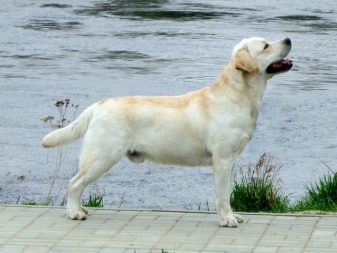
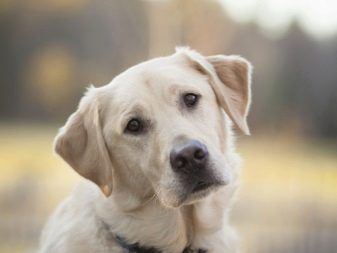
The standard color is black, brown. The yellow color provides many shades: from light cream to bright red, the presence of a light (white) spot on the chest is allowed.
If you are planning to take your pet to exhibitions, you should know for what shortcomings a Labrador can be disqualified:
- tail curving behind the back;
- "Cow" position of the hind legs;
- fleshy cheeks;
- longitudinal folds of the skin;
- other deviations from the above standards.
The height of an adult cable at the withers is usually about 56-57 cm, Labrador Retriever bitches are slightly lower, their height is 54-56 cm.

Labrador record holders
Unique animals of this breed, distinguished by their extraordinary size and superpowers, are listed in the Guinness Book of Records. This is partly due to genetics, but in some cases it is the result of prolonged training under the guidance of a person.
Here are just a few examples of such wonderful animals.
- It is known that the Labrador is a hunting dog that knows how and loves to swim. But two Labradors - Kai and Gypsy exceeded all expectations. The record holders managed to swim across the bay 15.6 km wide, and they did it in 6 hours 18 minutes. The owner of the animals was always with them, and encouraged their pets.
- The longest time of active activity as a guide was a girl named Cindy-Clio from Tel Aviv - 14 years and 8 months.
- Golden Retriever Trepp has managed to detain more than 100 criminals, as well as discover drugs worth 63 million dollars during his service with the police.
- The pet named Tabby is widely known for his activities to protect the environment from pollution with plastic containers. For six years, the Labrador has collected more than 26,000 bottles.
- The heaviest Labrador in the world is registered in Australia. Black male Sampson weighs 85 kg. However, due to its heavy weight, the animal cannot move, it has shortness of breath and high blood pressure. The reason for this was the wrong diet. Now the dog lives in a shelter, and doctors help her lose weight in all available and safe ways.
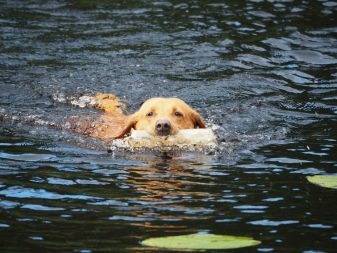
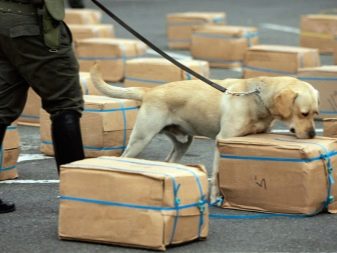
In addition, along with the German Shepherd, Border Collie, Poodle, Doberman and Husky, the Labrador is recognized as one of the most intelligent dogs with high intellectual potential.
How to correctly measure the parameters of a dog
If everything is clear when measuring an animal with weight, then other parameters should be dealt with.
- The growth of an animal, that is, its height, is measured at the highest point of its withers. For those who do not know what the withers are, you should know that this is the section of the trunk where the slope of the shoulder blades and the lower point of the neck converge.
- When you need to measure the head of a pet, the width of the head at the cheekbones is taken - you need to attach the tape to the center of the forehead, and then stretch it into the zygomatic arches in front of the ears.
- The length of the muzzle is measured from the interorbital hollows to the tip of the nose along the line of the inner corners of the eyes.
- To measure the metacarpus, the tape is passed below the wrist but above the base of the fifth toe.
- When measuring the chest, the tape should go around the dog's elbows behind the shoulder blades.
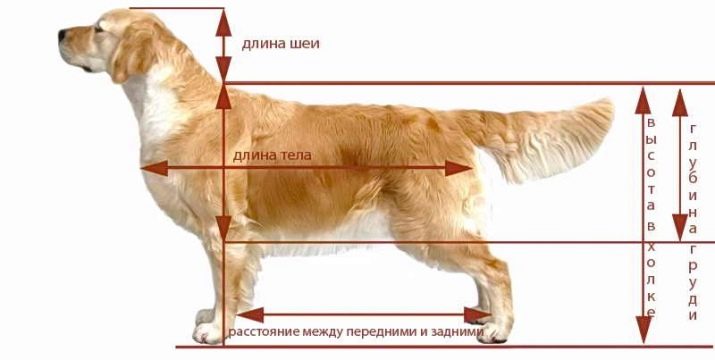
The height, weight and other parameters of a young dog should be measured regularly. To keep the animal calm, the procedure is carried out before eating, stimulating the animal with a treat. The puppy should not be allowed to stop growing or lose weight. Most often this is due to an unbalanced diet. However, if you notice that the puppy has not only stopped growing, but has also become inactive, sad, does not want to play and walk, and also if an incorrect positioning of the paws appears, this may signal such an unpleasant disease as rickets.

This disease appears at a young age from a lack of vitamin D, as well as phosphorus and calcium.
The bone mass "does not have time" to grow behind the muscle mass, as a result the bones become fragile, the back sags, the legs are bent, and growth stops.


How can you help your pet in this case? See your veterinarian for dietary adjustments and recommendations for a calcium-phosphorus supplement. It is also worth taking your pet out into the sun more often. In the autumn-winter period, this is quite problematic, so you can purchase an ultraviolet lamp and irradiate the puppy's tummy once a day, covering its eyes with a dark rag. You need to start with 5 minutes a day, then add a minute every day; the maximum warm-up time is 10 minutes.
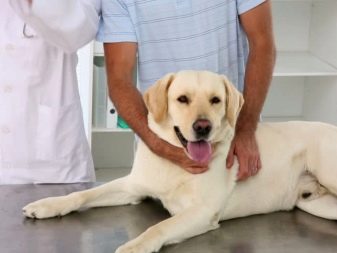
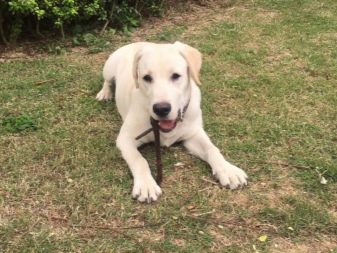
All about the Labrador breed, see the next video.






































